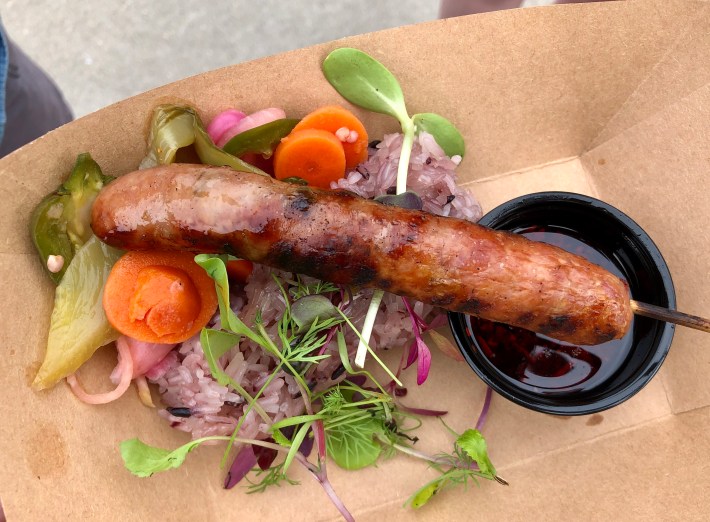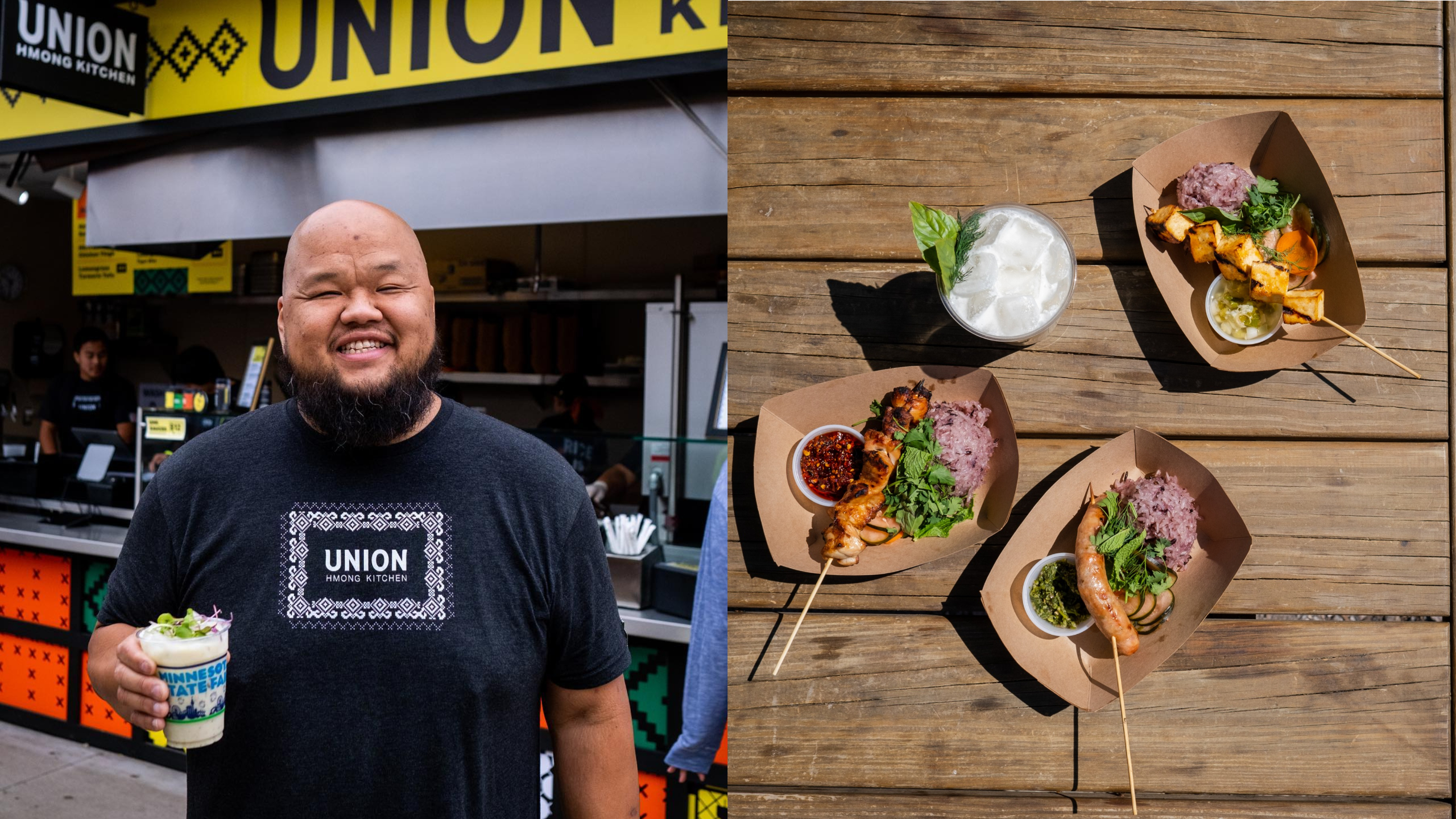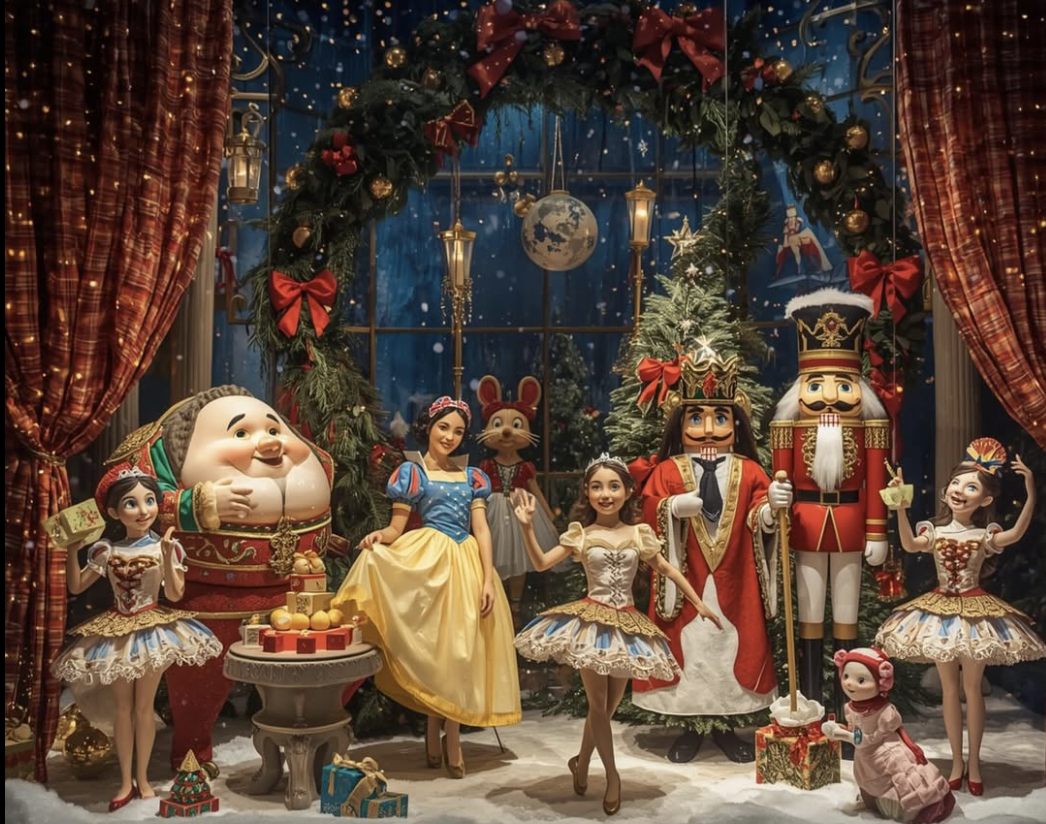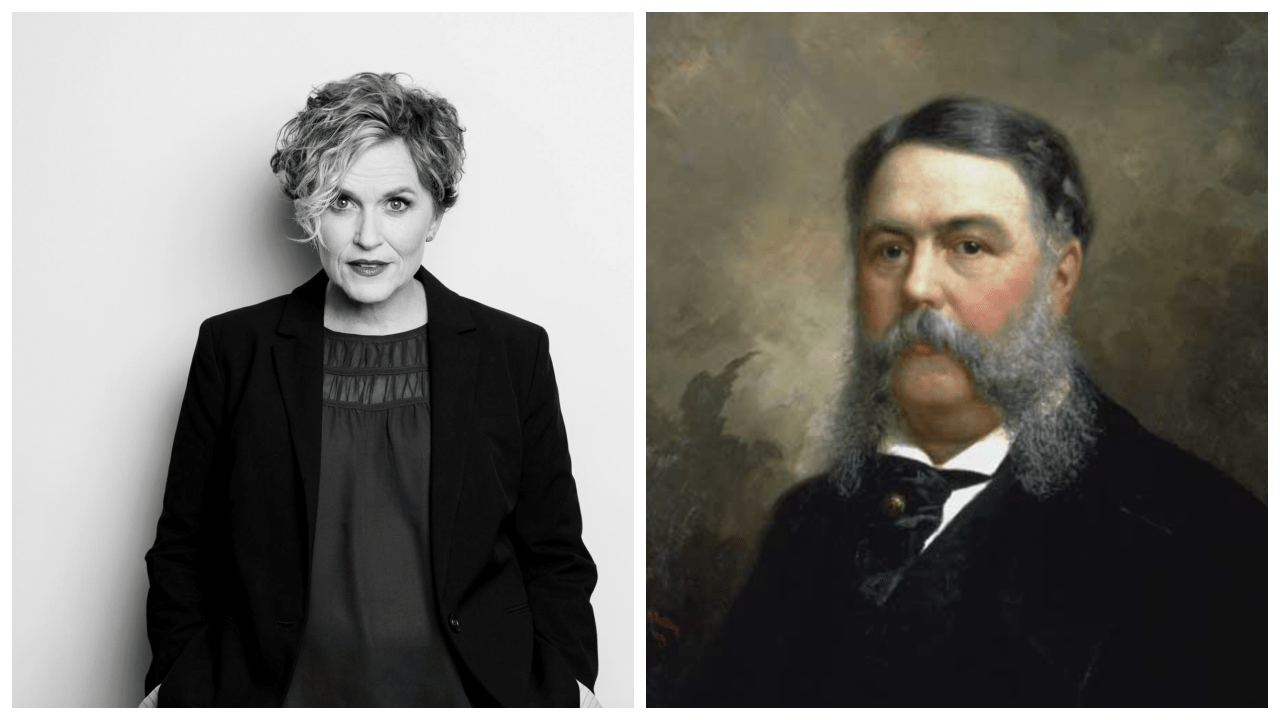I can’t track down a definitive list of James Beard Award-nominated chefs that have also served food at their respective state fairs. But if I had to guess, this summer Union Hmong Kitchen chef Yia Vang joined a club that has… fewer than three members?
"You know, at first I had this sense of like, I don't want to be known as 'State Fair Guy,'" Vang laughs, now that the end-of-summer serving bonanza is behind them.
Over the last few years, he and his team have worked hard and diligently to legitimize Hmong food, educating people about the culture and bringing the food he grew up with to a wider audience. Being nominated in the Beard's Best Chef: Midwest category this year felt like a significant turning point—acknowledgement that their dedication was paying off, that people in the culinary establishment were paying attention.
So his excitement about the State Fair was accompanied by a small, gnawing worry: Would debuting in the land of cheese curds, Pronto Pups, and deep-fried everything on-a-stick delegitimize the work they'd been doing to get Hmong food its long-overdue respect?
As it turns out, those concerns were unfounded. Union Hmong Kitchen was one of eight new vendors at the Minnesota State Fair this year and also one of the most popular, getting rave reviews from Minnesota Monthly, Mpls. St. Paul Mag, and us here at Racket. Their Mov + Nqaij (purple sticky rice with hot sauce and protein) and Dej Qab Zib (a coconut lychee colada) drew in long lines for the duration of the fair; Vang was hearing from friends around the country who saw Union Hmong Kitchen on their feeds and in the news. UHK made headlines at Next Shark, the massive online hub for Asian-American news.
Not bad at all for the State Fair's first-ever Hmong food vendor.
“It’s one of those things where in the middle of it you’re like, 'Oh my gosh, what did we do?'" Vang chuckles. The messages they got from Hmong Minnesotans throughout the fair—people who had been here for 15 years, 20 years, and were proud to see their culture represented on this stage—made it more than worth it.

Union Hmong Kitchen is the latest to bring a more diverse, international menu to the fair, following recent additions like Turkish pizza and Cuban fusion fajitas. Back in 2019, Douglas Mack wrote a story for City Pages about how the fair foods were changing and globalizing—that it wasn’t just stuff on sticks anymore, but beef tongue caramelos, chilaquiles, kimchi-and-curry poutine.
“The Lake Wobegon caricature—white, Lutheran, small-town—was never an accurate representation of us, but it’s become even more cringingly archaic over the past few decades, as Somali, Southeast Asian, and Latinx immigrant communities (among others) have grown and made their mark across the state—including the State Fair,” he wrote.
Vang is proud to help dispel the white Lutheran myth: "The Minnesota State Fair should be reflective of the people living in the state," he says. And there are 66,000 Hmong in the state, according to the Minnesota Historical Society.
At the same time, “It was our first opportunity to show a lot of people what Hmong food is,” Vang continues. “I thought about all those Minnesotans who are traveling in from Hutchinson, or Alexandria—they don’t have a Hmong community out there.”
But as with any positive social change, not everyone has been so enthralled by the more global options at the Great Minnesota Get-Together.
“I’ll be very honest with you: There’s a lot of comments about, ‘Oh, this is an affirmative action kind of thing,’ where the State Fair needs to be more diverse, so, who’s the most diverse people around here?” Vang says. “I don’t want that taking away from our people’s hard work.”
That their Mov + Nqaij was so popular is proof positive that most people are more than ready to embrace a more diverse fair experience.
(And it did, in fact, come on a stick.)
While Vang jokes that Union Hmong Kitchen is still dealing with “the aftermath” of the fair, he says he'd do it again "in a heartbeat."
"One of our goals, and I don't think I'm speaking out of turn for our team, is to be a staple here," he says. And why not? Back in the '70s, before she had a cookie empire, Martha Rossini Olson was simply a woman with a yogurt shop.
“We firmly believe that Hmong food is for people who are wearing ties and people who are wearing shorts,” says Vang. "This food is for everyone... and I hope this is a door that opens up for more Hmong vendors, and more vendors that represent what Minnesota is about."







